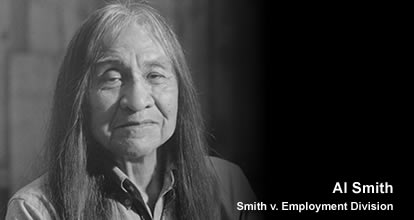Will the SCOTUS allow “religious” objections to government vaccine mandates?

Current first amendment doctrine — which holds that general laws of neutral application don’t require exceptions to be made on the basis of religious beliefs — is probably in big trouble. Alito, Thomas, and Gorsuch are on record as opposing this rule, so whether it survives in the context of government COVID mandates to which government employees object on “religious” grounds comes down to Brett Kavanaugh and Amy Coney Barrett:
Maine’s reason for denying the Does plaintiffs an exemption is straightforward. As the US Court of Appeals for the First Circuit explained in an opinion rejecting the plaintiffs’ arguments, “Health care facilities are uniquely susceptible to outbreaks of infectious diseases like COVID-19 because medical diagnosis and treatment often require close contact between providers and patients (who often are medically vulnerable).”
And health care workers are also the very people who need to intervene in order to prevent a public health crisis. If Covid-19 spreads like wildfire among these workers because too many people in hospitals and similar settings are unvaccinated — and thus more likely to contract and spread the disease — such an outbreak could disable the very workforce needed to treat Covid-19 patients.
One reason why this case is potentially troubling, moreover, is that if religious exemptions to vaccination are allowed, it will be very difficult to prevent people with political or other nonreligious objections from claiming religious motivations for their opposition to the vaccine.
Few of the major religions in the US teach their adherents not to take the Covid-19 vaccine. The Catholic Church, for example, says that it’s “morally acceptable” to be vaccinated. Pope Francis likened not getting the vaccine to “suicide,” a grave sin. Anti-vax sentiment is more common among white evangelical Protestants, but even there it is a minority view. As of late June, according to the Kaiser Family Foundation, 58 percent of white evangelicals had received at least one dose of the vaccine.
Nevertheless, at least one pastor appears to be profiting by offering documents to donors claiming that the individual has a religious objection to Covid-19 vaccines — in exchange for a donation. And while the law typically requires someone seeking a religious exemption to have a “sincere” religious belief, courts are ill-equipped to prove sincerity. Many judges will simply have to rely on an individual’s word.
Does, in other words, potentially pits the health of entire communities against the religious beliefs of a few health workers — and against some workers who may not even have sincere objections. It is far from clear which of these interests the Supreme Court will care more about. . . .
Recall that Smith requires religious objectors to follow a “neutral law of general applicability.” In both Roman Catholic Diocese and a related case, Tandon v. Newsom (2021), the Court — with Kavanaugh and Barrett in the majority — ruled that places of worship should be exempt from certain state public health rules imposing limits on how many people may worship at the same time.
“Government regulations are not neutral and generally applicable,” the five most conservative justices wrote in Tandon, “whenever they treat any comparable secular activity more favorably than religious exercise.” But the Court also defined what constitutes “comparable secular activity” very broadly in Tandon and Roman Catholic Diocese.
Prior to those two decisions, the Court permitted anti-Covid regulations to impose occupancy limits on places of worship so long as the same rules were imposed on similar secular institutions. In May 2020, for example, the Court upheld a California rule imposing occupancy limits on houses of worship. As Chief Justice John Roberts explained, the California rule was acceptable because “similar or more severe restrictions apply to comparable secular gatherings, including lectures, concerts, movie showings, spectator sports, and theatrical performances, where large groups of people gather in close proximity for extended periods of time.”
But then Justice Ruth Bader Ginsburg died, and Republican appointees gained a supermajority on the Supreme Court. The new majority ruled in Roman Catholic Diocese that places of worship could be exempt from public health rules if different rules apply to businesses — that are nothing like religious institutions — where large crowds of people gather to socialize, chant, and sing, such as “acupuncture facilities, camp grounds, [and] garages.”
Roman Catholic Diocese suggests, in other words, that religious institutions must be subject to the most favorable rules applied to any other institution, even if there are very good policy reasons to treat these institutions differently. Roman Catholic Diocese deemed it irrelevant that public health experts believed that houses of worship — like any other place where large groups of people gather for extended periods of time in an auditorium-like setting — are more likely to host superspreader events than, say, a grocery store.
I’m going to write another post about this, but basically the right wing in America today is in the grip of a combination of paranoiac fascism and paranoiac evangelical Protestantism/ultramontane Catholicism (of course the current Pope is strongly in favor of vaccines, but reactionary Catholics don’t let that kind of detail get in their way).
One way in which this manifests itself is that if their religious institutions aren’t treated as favorably as the most favorably treated secular institutions — even if there are compelling practical reasons to treat those latter institutions differently than the “disfavored” religious institutions — people like the Furious Five treat this as prima facie evidence of the impending martyrdom of People of Faith (meaning their faiths of course, not those over there).
So I’m not optimistic.


